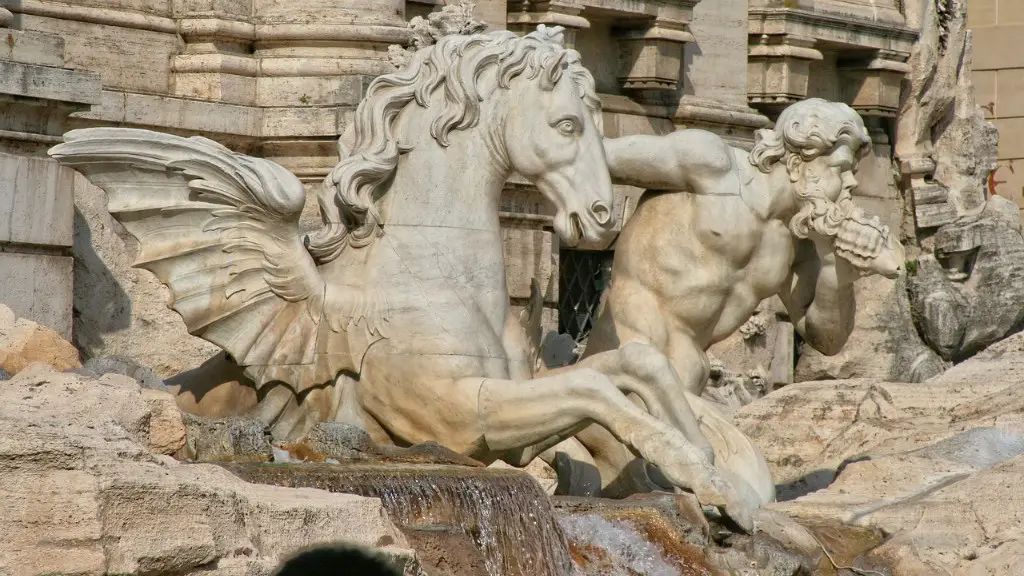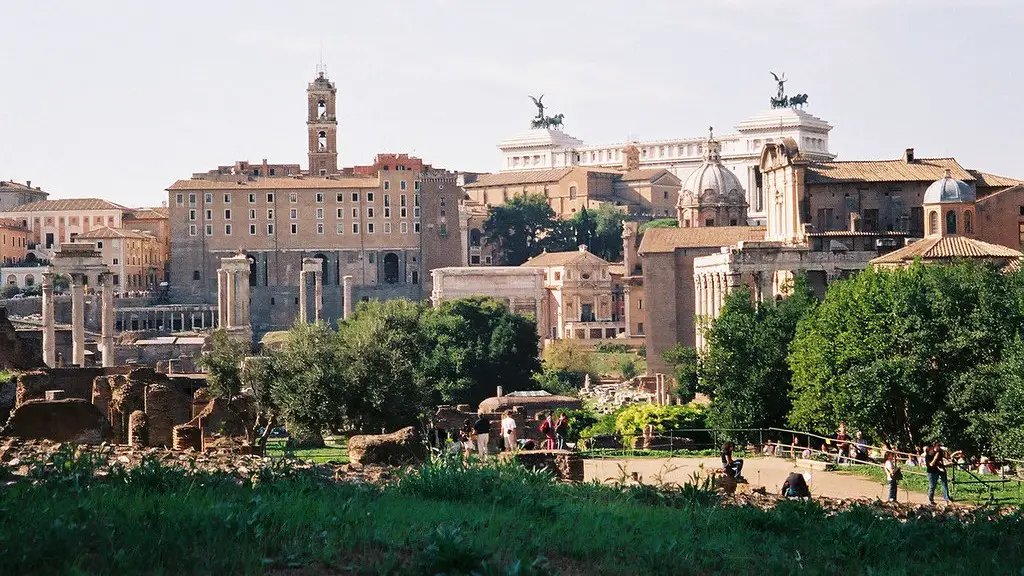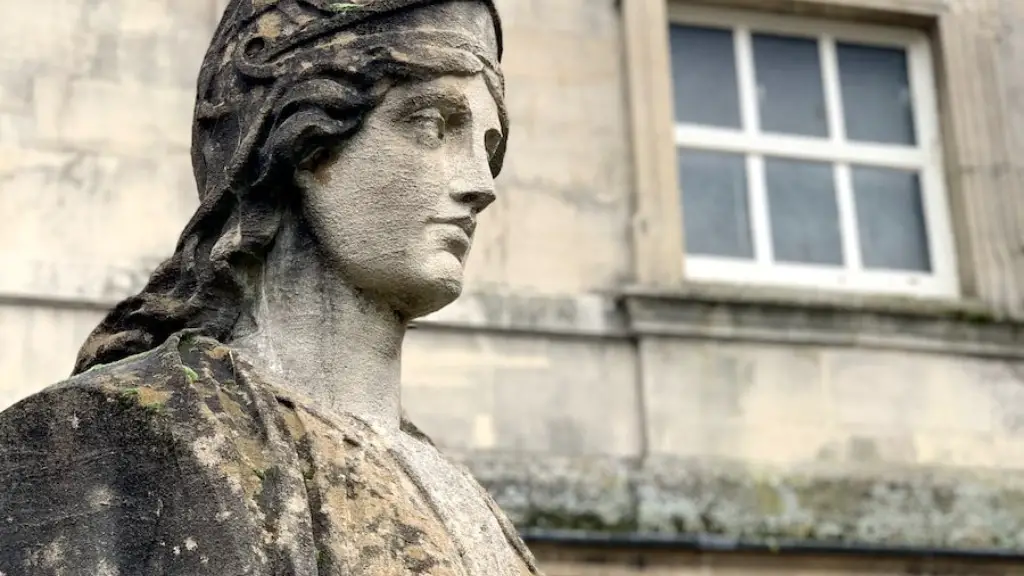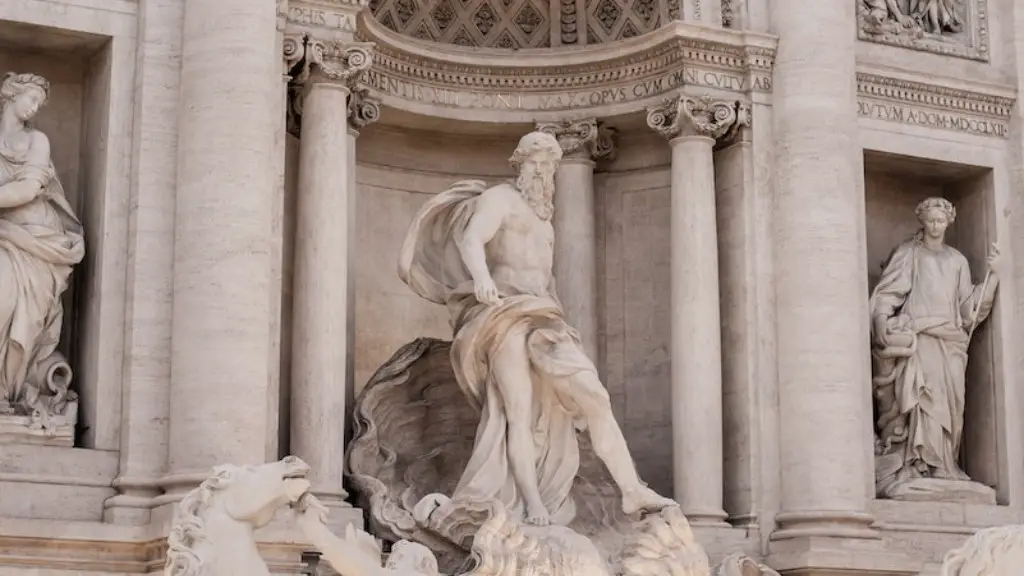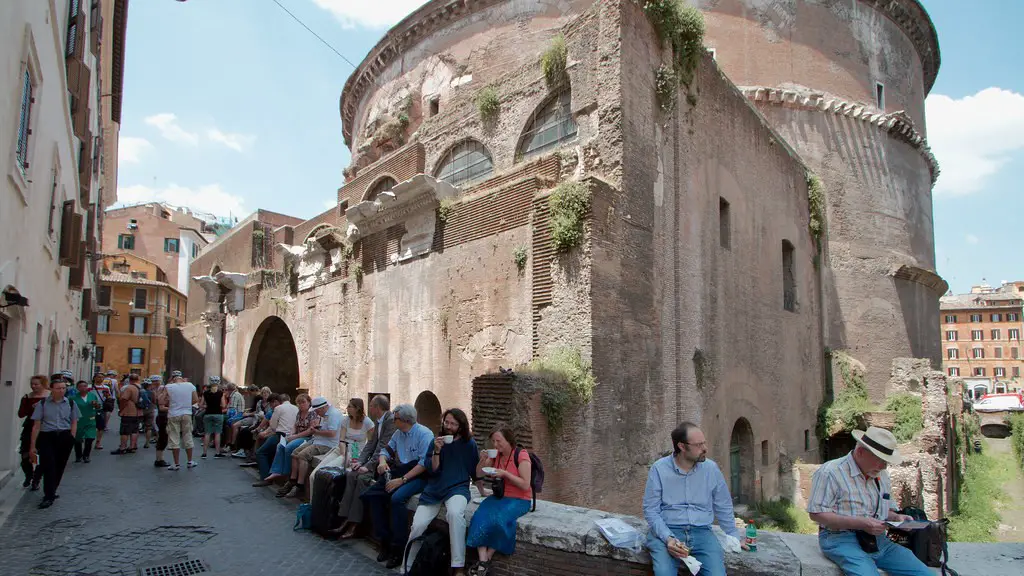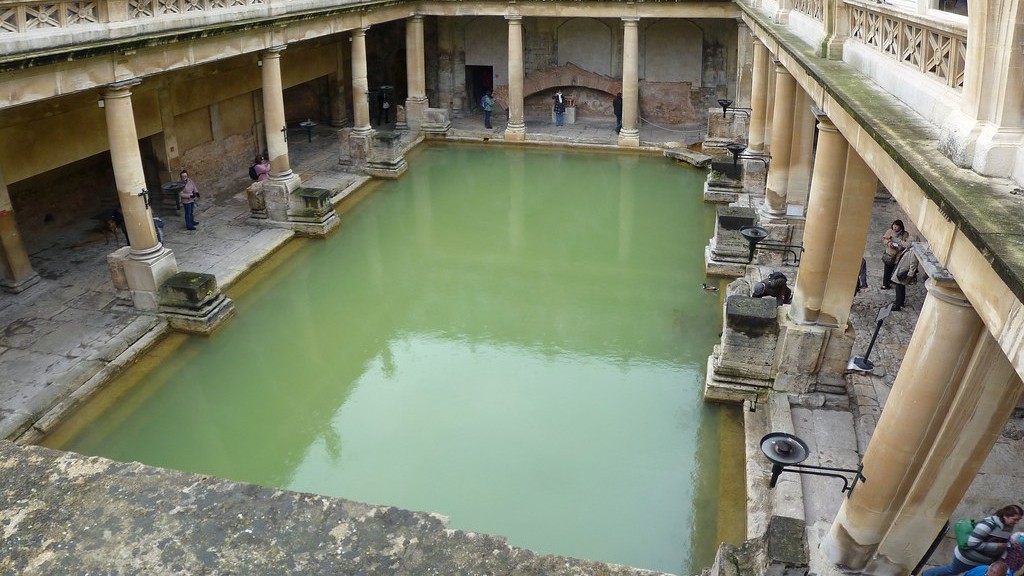Ancient Rome was a developed civilization that shaped the modern world and its culture in unparalleled ways. From its founding to its collapse, an incredible amount of forces were at play that were both unique and complex. Some of the most important developments included the political, social, religious, architectural and military creations that took shape over time.
The geography of Ancient Rome was paramount for its founding and for its establishment as a great power. Built on the seven hills at the top of the Tiber river, its strategic location allowed it to gain access to the vast resources of the Mediterranean while also protecting them from external threats. The city was also tightly linked with the Roman gods and its gods are seen as the guardians of the people. This provided them with a spiritual identity and helped cement the political system.
Politically, Rome was a Republic, a system of government where a small number of citizens (the Senate) held power. This system was a carefully maintained balance of power between the Senate, the consuls, and the tribunes that provided the framework for a strong, developing state. This system of government was adopted from the Etruscans and was strengthened by the census and the development of a legal code that governed Roman society.
The social order in Ancient Rome was highly stratified and closely linked to the political structure. The classes were divided into patricians, plebeians, and slaves. The patricians, the highest class, were wealthier and held more political power, while the plebeians, were the majority of the population and held no political office. Slaves fared the worst and were treated as property.
Religiously, Roman faith was polytheistic. The belief in many gods was based on the belief that their gods would give them the strength, protection, and guidance they needed to succeed. The citizens of Ancient Rome would honour and worship their gods by taking part in festivals, processions, and other forms of devotion.
Architecturally, Ancient Rome was a masterpiece of engineering and design. From its impressive monuments and buildings to its incredible network of roads and aqueducts, it was a testament to what could be accomplished by the human spirit and will. Its buildings were an important part of the culture, many of which still stand today and are iconic symbols of the great city.
Finally, Ancient Rome was an impressive military power. By the second century BC, it had become one of the most powerful and influential empires in history. It had conquered vast territories and maintained its power through brutal force and military superiority. This military prowess also enabled it to spread its culture and its power across much of Europe, the Middle East and North Africa.
Economy of Ancient Rome
The economy of Ancient Rome was a complex network of agricultural and mercantile production. It had a highly organized system of taxes and tariffs, which provided it with a steady stream of income that helped fund their military and cultural projects. Trade was conducted both locally and internationally, and the ports at Ostia, Puteoli and Ravenna served as vital hubs of commerce. As a result, Rome was able to become one of the wealthiest cities of the ancient world.
Agriculture was an important sector of the Roman economy and provided a large portion of the food supply. They employed a variety of agricultural techniques, including terracing of the hills, crop rotation, and the use of oxen for plowing. Rome also had access to rich mineral deposits, most notably gold, silver and iron mines.
The manufacturing sector of the Roman economy was highly productive and advanced. Through workshops and factories, the city was able to create various products such as textile, pottery, glassware and weapons. This allowed them to satisfy their domestic needs as well as to provide for export. They also had a thriving shipbuilding industry that constructed ships used by the military to pursue their conquests.
The banking system of Ancient Rome was also highly organized and developed. Money was created through coins and the use of non-cash payments such as letters of credit. Money lent at interest provided the necessary capital to carry out the ambitious building projects and infrastructure.
Commerce was at the centre of the Roman economy. Merchants would go from city to city, trading goods, services and information. This allowed Rome to profit from trade, which in turn helped to fund its military conquests. Large markets and trade fairs were also held in the city, which attracted merchants from around the Mediterranean.
Cultural Legacy of Ancient Rome
The impact of Ancient Rome is still felt today in the many ways that it has shaped the world’s cultural identity – from art and architecture to literature and language. Its art and architecture have proven to be incredibly influential as well, inspiring much of the architecture seen today, from the Colosseum to the Pantheon.
Language was an incredibly important aspect of Ancient Roman culture and Latin, the language of Rome, is still used in some religious, scientific and legal contexts today. Likewise, the Latin alphabet and its derivatives, such as the Italian language, are still used in much of the world.
The technological advancements made by the Ancient Romans were also remarkable. From the invention of concrete to the development of the Julian calendar, Roman culture had a far-reaching influence on the development of modern technologies. The practice of medicine was also highly advanced and saw great strides in the advancement of medical knowledge. This paved the way for the modern medical practices we still use today.
Literature was also an important part of Ancient Rome. Roman writers such as Virgil, Ovid and Cicero left an incredible legacy that still shapes our understanding of history, philosophy and literature today. Their works are incredibly influential, inspiring subsequent authors and continuing to shape our understanding of the Roman period.
Finally, Ancient Rome left an indelible mark on the law and order of modern civilizations. This is evident in the fact that many legal systems use the Roman principles of law, which include concepts such as due process, the right to trial by jury, and the separation of powers. These concepts provide the basis for many of the laws and legalities of the modern world.
Religion of Ancient Rome
Religion was an important part of daily life in Ancient Rome. Its citizens were highly committed to worshipping their gods and goddesses, as well as to upholding the values of their society. Worship and sacrifices took place in the home, at the temple, and in public festivities. Religious festivals were held regularly and often involved processionals and plays to honour the gods. The Roman calendar was determined by the time of these festivals and it was essential that they were celebrated in the correct order.
The most important gods of Ancient Rome were the twelve Olympian gods – Jupiter, Juno, Minerva, Apollo, Venus and more. These gods were associated with various elements of Roman life. Jupiter was seen as the source of power, Juno was associated with marriage, and Apollo was associated with the arts. Religious authority was also held by the Vestal Virgins, priestesses of the goddess Vesta whose temple was in the heart of Rome.
In addition, gods and goddesses from other cultures were also adopted, such as the Greek gods and goddesses. This was done in part due to the vast trading networks of Ancient Rome and the cultural exchanges that took place. This religious diversity helped to shape the ever-changing religious landscape of the Roman Empire.
The Roman religion was also heavily influenced by mystery cults, cults where participation was restricted to a select few. These cults, such as the Cult of Mithras, were often seen as a spiritual refuge from the complexities of Roman life, providing comfort and empowerment to their members.
The tradition of religion in Ancient Rome allowed people to have a sense of purpose, solace, and community while also complying with their duty as a Roman citizen. It is no wonder that the Roman religion has had such a strong influence on the development of our modern cultures and their religious beliefs.
Techology and Science of Ancient Rome
Ancient Roman technology and science was made possible by its economic and political stability, allowing for the development of more ambitious projects. This period saw great strides in knowledge and understanding of disciplines such as mathematics, engineering, and medicine. It was also during this period that the first schools were established.
Roman engineering was some of the most impressive in the ancient world and was used to construct various monuments and buildings, such as the Colosseum and the Pantheon. This engineering was made possible by their use of cement, concrete and arches, which provided the necessary strength and stability. They also developed efficient systems of roads and aqueducts to help transport goods and people throughout the empire.
In medicine, the Ancient Romans made great strides in understanding and treating illnesses. Roman physicians had access to a variety of cures and treatments, such as herbal remedies, massage, and the use of hot and cold thermal springs. Rome was also one of the first places to practice public health initiatives and to establish hospitals.
In the fields of mathematics and astronomy, Ancient Romans made a number of advancements that laid the groundwork for modern science. They developed systems of mathematics and measurement, as well as created new instruments such as the astrolabe. They also made important discoveries in astronomy such as the orbits of the planets and the cause of eclipses.
The inventions and discoveries of the Ancient Romans played an essential role in their society, providing them with the tools they needed to succeed. Their knowledge and understanding of a myriad of disciplines laid the foundation for the modern world we live in today.
Decline of Ancient Rome
By the third century AD, the decline of Ancient Rome had begun. This decline was marked by internal struggles, political instability and economic strain, all of which weakened the once great superpower. It was also marked by a decline in public infrastructure, ultimately leading to the disintegration of the Empire.
The decline of Rome was also caused by external forces. Large barbarian invasions, aided by internal divisions, put further pressure on the empire. The army was weakened and the empire gradually lost its territories. In an act of desperation to save their city, the Romans adopted Christianity as the official religion of the empire.
The decline of the Roman Empire had far-reaching consequences. The fall of an empire was accompanied by a decline in trade, a decline in technology and a decline in cultural production. The decline of Rome also had a profound impact on the world at large, leading to the decline of many other civilizations, the emergence of the medieval period and the Dark Ages.
However, despite its decline, Ancient Rome and its legacy live on. Its many accomplishments and cultural contributions can still be seen today in Europe, the Middle East and many other regions of the world. Its political, economic and social structures have also served as models for other nations and civilizations.
Conclusion
Ancient Rome was an incredible civilization with a profound influence on the world. Its geographical location, political infrastructure and powerful military were amongst its greatest strengths, allowing it to become a wealth of medieval human knowhow and an exemplary model for today’s society. Its cultural legacy continues to be felt today, from its art and literature to their contributions in the fields of religion and law. Finally, its decline provides a cautionary tale, a reminder of the fragility and transcience of power.
